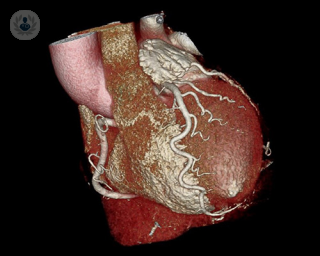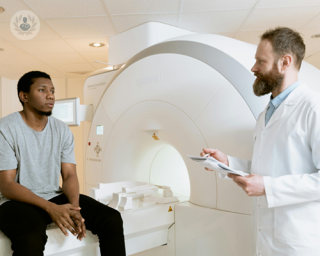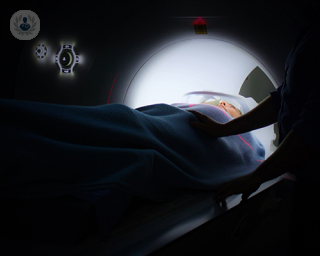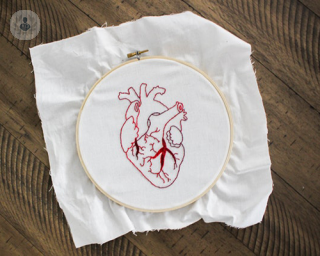Coronary angiography
What is a coronary angiography?
A coronary angiogram, also known as coronary angiography, is an examination carried out with an X-ray in which the coronary arteries are visualised, along with the blood vessels that surround the heart, whose function is to transport blood to the heart. To visualise the arteries, a special type of dye called contrast medium is injected and X-ray images are taken to visualise the coronary arteries and their circulation. The dye is released via a catheter, which is a thin hollow tube, inserted in the blood vessels and guided up to the coronary arteries.

What does it involve?
The procedure is carried out under local anaesthetic that is applied to the area where the catheter is inserted. The anaesthetic is applied via one of the major arteries of the human body, the brachial, radial, or femoral artery. However, the femoral artery is preferred as it is the largest, and it allows a faster passage of the anaesthetic without the need forany further manual interventions.
The catheter is guided up to the coronary artery where the dye will show any blockages in the artery. At the end of the procedure, the specialist will remove the catheter and will press on the area with a tourniquet in order to stop any bleeding. The procedure does not require a long recovery or any other manipulation to the wound site.
Why would you need a coronary angiogram?
A coronary angiogram is carried out to evaluate the blood flow inside the coronary arteries. This test allows the specialist to observe the arteries and find any blockages, such as clots or cholesterol build-ups.
The test may be prescribed in the following cases:
- Coronary artery disease
- Genetic heart conditions present from birth
- Genetic defects or defects acquired through different cardiac valve diseases
- Sudden acute pain in the chest or arm
- Cardiac insufficiency
- Planning and/or evaluating the possibility of a surgical intervention
- Checking the results of a previous procedure, for example a bypass
How should I prepare for a coronary angiography?
The preparation for the test is rather simple: you must come on the day of the test with an empty stomach. The specialist will carry out a prior test to evaluate any possible allergies to the contrast medium. The coronary angiogram is an invasive test, and for this reason, it is only carried out when all other non-invasive tests have failed to determine the cause of the pathology.
Nowadays, the procedure is not painful thanks to the local anaesthetic used in the area where the catheter is introduced and the contrast liquid is released, so you will not feel any discomfort.
What do you feel during the test?
Since the test is performed with anaesthetic, you will not feel any pain. The following day, it is possible that you may feel soreness in the area where the catheter was inserted, but it will not last long.
If the catheter has been inserted in the groin, it is necessary that you rest for the following 12 hours after the test. It is also important that you drink lots of water to eliminate the contrast medium used during the procedure.

















